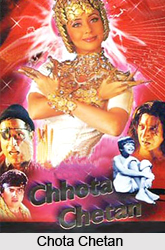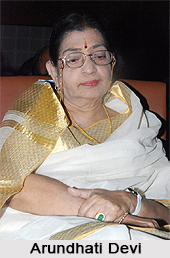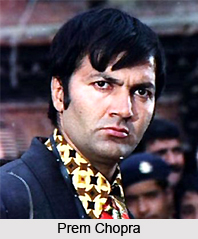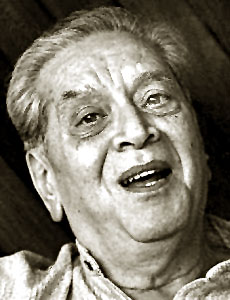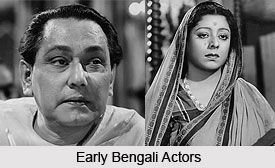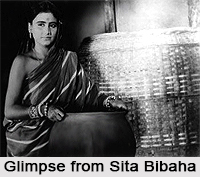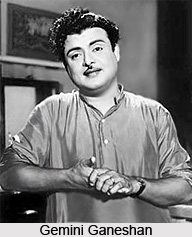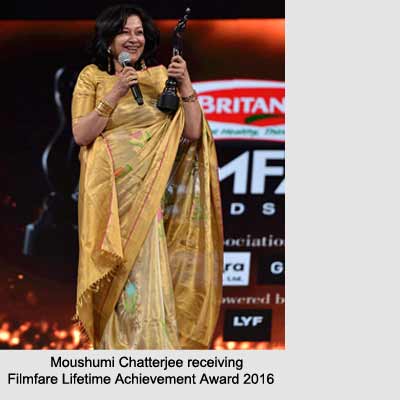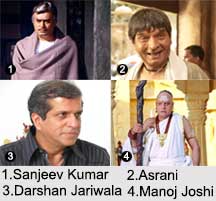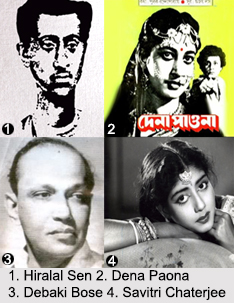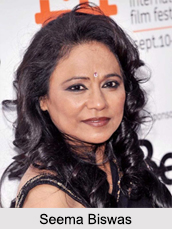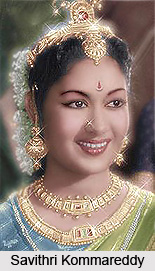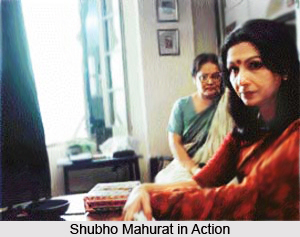 Shubho Mahurat, a Bengali film, is one of those few mystery thrillers that are made on Indian celluloid that worships the authoring of the past, the gender issues and the space: mental, physical and conscience consciousness. The Saradindu Bandyopadhyay fans can ardently swear by Byomkesh Bakshi like Agatha Christie loyalists do by Miss Marple.
Shubho Mahurat, a Bengali film, is one of those few mystery thrillers that are made on Indian celluloid that worships the authoring of the past, the gender issues and the space: mental, physical and conscience consciousness. The Saradindu Bandyopadhyay fans can ardently swear by Byomkesh Bakshi like Agatha Christie loyalists do by Miss Marple.
When it comes to Rituparno Ghosh, both characters were fascinating. He did `Shubho Mahurat` based on Christie`s `The Mirror Cracked from Side to Side". Released in the year 2003 Shubho Mahurat is directed by Rituparno Ghosh. The film stars Sharmila Tagore, Nandita Das, Rakhee Gulzar, Sumanta Mukherjee, Kalyani Mandal, Tota Roy Chowdhury, Rajesh Sharma and others. Shubho Mahurat, finds this maestro doing what he is best at- painting films with a woman-centric brush! Here his women will murder to settle old scores. His film being again the human images of human emotions, how he tells our tales! And a jeans-clad young woman film journalist who gets entangled in the thick of events and critically espouses the cause of loving two men at the same time, but with equal sincerity. No more the typical, vulnerable middle-class women who get the wrong end of the stick and are stuck in a dreary urban Bengali existence of mosquito nets and taant saris, maach, mishti but “Moreâ€!
Plot of Shubho Mahurat
The film can be taken as a mise-enabym of sorts, a crucial object of study in order to understand the persistent characteristic traits of "parallel" filmic practice, key narrative concerns, in and around the oeuvre of Rituparno Ghosh as an auteur. The film can be recognized as a precursor to the subtle yet discernible departures and shifts that have been taking place in the look of the later films of the director. An NRI Bengali star actress of yesteryears Padmini Chowdhury (Sharmila Tagore) comes to Kolkata apparently to produce a film to be directed by her second husband Sambit Roy (Sumantra Mukherjee). The director who has been assigned for the new film has been out of work for a long time. The buzz was that he has a shady past. She makes it a point to rope in a close co-actress and friend Kakoli (Kalyani Mandal) for the lead role. Kakoli dies on the first day of the shoot under mysterious circumstances while she was being interviewed by a film journalist Mallika (Nandita Das). Her death is soon followed by the surprising and mysterious death of a female makeup artist. Then a police inspector (Tota Roychowdhury), Mallika and her Rangapisi/aunt (Rakhee Gulzar) investigate the matter to find that Padmini came to take revenge on Kakoli who had inadvertently caused harm to her during her pregnancy resulting in the birth of a spastic child and its early death. Padmini, after having confessed to the crime to Rangapisi who has been a fan of hers, commits suicide.
For her film Padmini Choudhary had cast a retired actress, Kakoli, with whom she had worked earlier. Padmini Choudhary was once a well known actress but due to pregnancy she has left work and then her home and children have kept her away from limelight. After a long gap she is finally back on her home turf and indulges in film production with people she knows.
On the other hand Mallika keeps a tab on the investigation. Back home she has an aunt whom she calls Ranga Pishi (Rakhee Gulzar). Ranga Pishi is an ardent follower of films and shows interest in the case. An IPS officer (Tota Roy Chowdhury) takes over the case. In a sub plot a love triangle is shown where Mallika and the IPS officer are going around. A still photographer also likes Mallika. But more interestingly the photographer is also linked to the NRI producer. Meanwhile the police are still investigating the case when another person is killed. She is a hairdresser. The police take in custody a camera assistant who was having an affair with her. But Ranga Pishi is not convinced with these developments.
Ranga Pishi writes to Mallika`s magazine in the forum section which discusses the personal problems of individuals. The write up attracts Padmini Choudhary`s attention and she turns up at Mallika`s house to meet her. But Ranga Pishi meets and greets her. As they talk it is revealed that it is Padmini Choudhary is the culprit. Before she left India she was married to somebody else. She was still shooting for her film while pregnant. Kakoli was shooting with her and she was suffering from a contagious disease. Even after repeatedly telling her about Padmini`s pregnancy and the problems that her unborn child can face, Kakoli continued with her shoot saying that she was absolutely fine.
Padmini gave birth to an abnormal child. Her marriage broke up and she settled abroad. As a result Padmini wanted to avenge the wrong done to her and her child. She returns to India after a long time and brings Kakoli out of her hibernation. At the Shubho Mahurat, she mixes poison in the soft drink and tactfully exchanges their glasses. The hair dresser, however, notices this. In a desperate need of money, she blackmails Padmini, but later gets rid of her too. After sharing her story with Ranga Pishi, Padmini returns home and that very night she commits suicide.
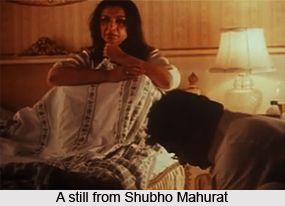 It is perhaps possible to theorize on the dwelling places and households of the key protagonists in Shubho Mahurat, in the light of the theories of interior spaces and objects thereof. According to Jean Baudrillard the order of placing furniture in a house belonging to a certain class reflects the socio-familial condition of any given period. He says, rooms and other interior spaces are constructed in such a way so that they can maintain a functional relationship with the family and can contribute to the growth of different faculties of an individual. Therefore traditional good taste in choosing an object of home decor, according to Baudrillard, lay in the owner"s affinity with them.
It is perhaps possible to theorize on the dwelling places and households of the key protagonists in Shubho Mahurat, in the light of the theories of interior spaces and objects thereof. According to Jean Baudrillard the order of placing furniture in a house belonging to a certain class reflects the socio-familial condition of any given period. He says, rooms and other interior spaces are constructed in such a way so that they can maintain a functional relationship with the family and can contribute to the growth of different faculties of an individual. Therefore traditional good taste in choosing an object of home decor, according to Baudrillard, lay in the owner"s affinity with them.
Special Features of Subho Mahurat
There is a foregrounding of a middleclass sensibility in the depiction of the interior spaces of the house of Rangapisi. The house consists of two bedrooms, a kitchen, a hallway-cum-dining-sitting space and a staircase leading to the terrace. When the film introduces the spectator to this house the first thing that attracts notice is the ever yard ness of a lived space, reverberating with almost a feminine affect : household chores performed by Rangapisi, the utensils used for food, containers on the dining table, a glimpse of the kitchen crockery and cutlery and the living space decorated with different types of wall hangings including a mechanically reproduced Monalisa-smile framed in glass, a metal face of Lord Ganesha, an old photograph of Ranga pisi as a young bride, flower embroidery framed in glass.
Junk jewellery, Rajasthani puppets hanging from the mirror stand on the dressing table, the canvas board full of different pin ups, block printed bed-sheets, old switch boards, old table fan, old style glass window pane framed with wood, a refrigerator, a small TV set, an aquarium, a big birdcage, a two tier water filter and a book case on the wall. Rangapisi"s tactile intimacy with objects like her betel leaf box, washed clothes, pillows and cushions, utensils, film magazines and her kittens help build up her character and her location among the objects. Such an organization of spaces and objects make her a very familiar figure. Yet it appears that she enjoys some kind of a power and agency thanks to her command over this space, her affinity with the world of objects and her knowledge of the crime and the criminal almost emanates out of this power over the banalities of everyday life. This space is shown several times in the film and it becomes the most important site for narrative resolution. One marked feature that adds to the construction of this space is the suggestive profusion of daylight pouring in through iron rod windows making it look like a naturally lit space. The interior space of the flat that belongs to Padmini Chowdhury may be termed as "panoramic interior" which is lived yet very detached from the living beings, where the inner and the outer spheres are marked out sharply. Suggestively, this space is mostly lit with artificial light. The whiteness of the walls, glossy bed-sheets, wall paper, lampshades, curtain, mirrors, black and white wall portrait of the star underlined by light, iconic photograph of the city memorial on the wall, table clock, photo-stand, the profusion of white and golden and the material glass all these define the spatially fleeting presence of the NRI star and add to the shopping window aesthetics. This was something unprecedented and unfamiliar to the films of Rituparno Ghosh at the time when the film was released. The commonsensical logic that the space belongs to a star persona will not suffice to explain the very constructed, dreamy look of the interior spaces.
Reception and Awards of Shubho Mahurat
Shubho Mahurat bagged two awards at the National Film Awards, including Best Bengali Feature Film. It received the Silver Lotus Award at this ceremony as the Best Regional Film and Rakhee won the National Film Award for Best Supporting Actress.
But as film journalist Shantanu Chakraborty points out, Shubho Mahurat is unique because it"s a crime film where the victims, the murderer and the sleuth all are women and the motive is very feminine too. Sleuths or criminalists have always been presumed to be men in western and Bengali literary traditions and cinematic imagination. There are exceptions like Miss Marple. But mainly detective stories and films have been considered a masculine genre in general which is now being questioned raising the issue of a crisis of masculinity. Grey characters, no police intervention, nothing: the detective knows who"s committed the crime, but she does nothing. He deliberately had women as both criminal and detective, because they"re inherently more tolerant. In an ordinary detective story, it is the hunter and the hunted – there"s no relationship between them except of wit. Politics of Pastness is the tagline of the line!
